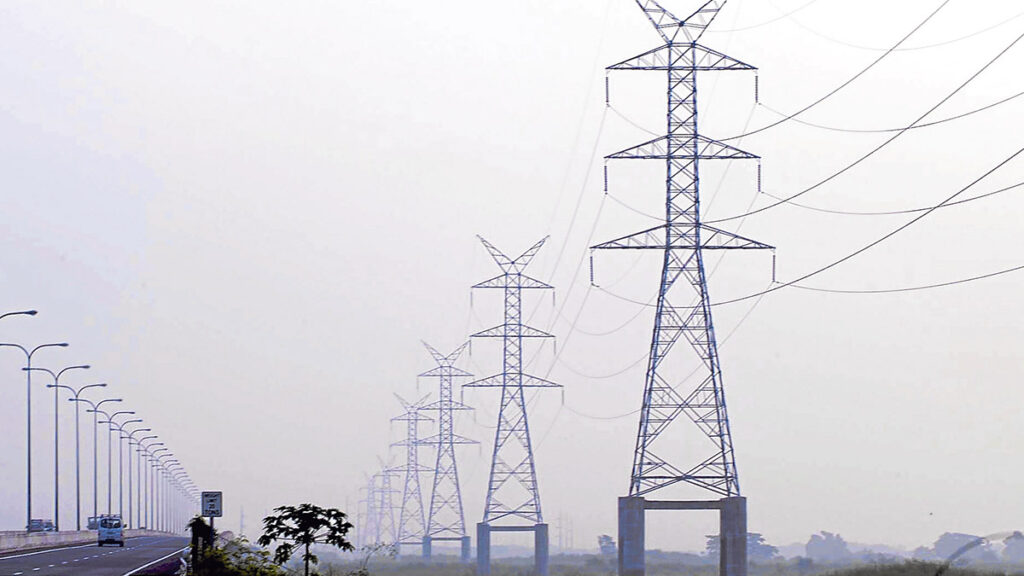Alerts raised on Visayas, Luzon grids due to power woes

RED, YELLOW EXPLAINED According to the National Grid Corp. of the Philippines, a red alert is issued when the power supply is insufficient to meet consumer demand, while a yellow alert means the operating margin or excess capacity of operating plants is not enough to meet the transmission grid’s contingency requirement. PHOTO FROM NGCP’S FACEBOOK PAGE
MANILA, Philippines — The Visayas grid was placed on yellow alert while the Luzon grid on red alert by the National Grid Corp. of the Philippines (NGCP) on Tuesday, April 16. This was after 42 power plants either stopped supplying electricity or reduced their output.
When power supply is insufficient to meet consumer demand then the NGCP, which operates the country’s transmission backbone, will issue a red alert.
For yellow alert, the NGCP will issue it when the operating margin or excess capacity of operating plants is not enough to meet the transmission grid’s contingency requirement.
The NGCP issued a red alert over the Luzon grid which started at 2 p.m. and ended at 11 p.m. which means rotational brownouts could be expected during these hours.
READ MORE:
Address possible yellow alerts, Gatchalian urges DOE
Power outage-prone Mindoro soon to be linked to Luzon grid
A yellow alert was declared from 1 p.m. to 2 p.m., 4 p.m. to 6 p.m., and 9 p.m. to 11 p.m. A yellow alert does not necessarily lead to a power outage.
NGCP also put the Visayas grid on red alert from 5 p.m. to 9 p.m. and on yellow alert from 9 p.m. to 11 p.m.
Unscheduled shutdown
The grid operator said 42 power plants in Luzon and the Visayas were either on an unscheduled shutdown or running below capacities.
In Luzon, 21 power plants were on forced outage while three others were operating at limited capacities with a combined capacity of 2,477.3 megawatts.
Major power plants in Luzon that went offline included two units of Pagbilao (382 MW each), Masinloc 1 (344 MW), Sta. Rita (264 MW), Southwest Luzon Power Generation Corp.’s unit 2 (150 MW) and two units of Kalayaan (180 MW each).
In the Visayas, 13 power plants were on forced outage while five others were running below capacities with a total capacity of 779.5 MW.
TVI (169 MW) and KSPC 1 (103 MW) are among the unavailable power facilities. On the other hand, PCPC (135 MW) has been offline since February this year.
NGCP said the peak demand in Luzon was 13,024 MW while the available capacity was only 13,537 MW. In the Visayas, peak demand was pegged at 2,440 MW as against the available capacity of 2,742 MW.
READ MORE:
Coal still dominates as renewables grow in PH’s power mix
Renewables on pace to overtake coal as top power source by 2025
Energy conservation pushed
The Department of Energy (DOE) said it was closely coordinating with all power stakeholders to ensure that appropriate measures were taken to minimize the impact.
“While we continue to monitor and ask our power plant operators to work on restoring full operations, we can maximize our energy efficiency efforts as we go through this period of extreme heat,” Energy Secretary Raphael Lotilla said.
“Flexible work arrangements and other conservation measures would also be helpful. The extremely high temperatures have been affecting the operations of power plants in the grid,” he noted.
The DOE reiterated President Ferdinand Marcos Jr.’ directive for all government offices to take the lead in conserving energy and minimizing power use, particularly during this period.
Electricity consumption historically rises during the summer months, which this year have been worsened by the El Niño dry spell, because of the increased use of cooling appliances.
Manila Electric Co. (Meralco), the country’s largest power distributor, implemented any manual load dropping (MLD) or rotating power interruptions within its coverage area for more than an hour.
“This is partly due to the help of our big-load customers, which collectively deloaded around 300 MW under the interruptible load program (ILP),” Meralco said in a statement.
READ MORE:
NGCP to formally switch on Visayas power interlink
Why Cebu needs more power investments to secure future demand
ILP is a voluntary, demand-side management program of the Energy Regulatory Commission wherein big Meralco customers are requested to use their own generator sets instead of relying on electricity from the grid.
This helps prevent power outages in households during red alert situations.
When all companies in the ILP use their generators, more than 600 MW can be made available to the Luzon grid for use by small consumers.
However, NGCP said it implemented an emergency MLD or rotational power interruptions affecting portions of northern Luzon which was first implemented at 4:16 p.m. “to protect the integrity of the power system.”
Affected were the electric cooperatives in Benguet, Ilocos Sur, Nueva Ecija and Aurora.
Additional supply
A few weeks earlier, the DOE had assured the public of ample power supply for April, saying some power plants with a combined capacity of 300 MW would add to the grid.
Energy Assistant Secretary Mario Marasigan had said that certain coal, solar, biomass and hydropower plants, mostly located in Luzon, as well as Unit 1 of the Mariveles coal-fired power plant in Bataan province would be switched on during the period.
He added that several hydropower facilities with a combined capacity of around 20 MW, a 29-MW geothermal (binary) project and solar power plants with total capacities of about 104 MW would start operating.
Disclaimer: The comments uploaded on this site do not necessarily represent or reflect the views of management and owner of Cebudailynews. We reserve the right to exclude comments that we deem to be inconsistent with our editorial standards.
